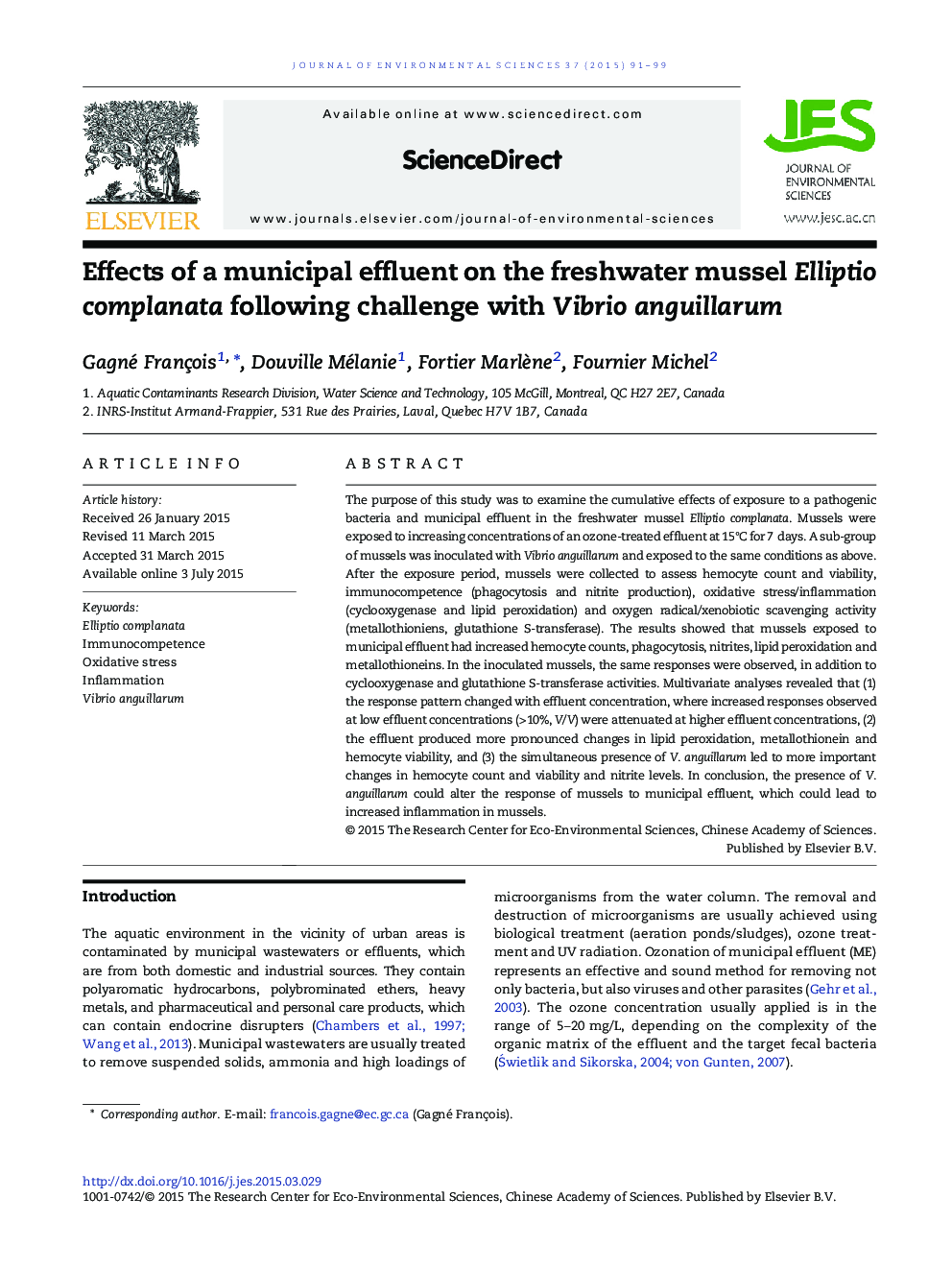| Article ID | Journal | Published Year | Pages | File Type |
|---|---|---|---|---|
| 4453910 | Journal of Environmental Sciences | 2015 | 9 Pages |
The purpose of this study was to examine the cumulative effects of exposure to a pathogenic bacteria and municipal effluent in the freshwater mussel Elliptio complanata. Mussels were exposed to increasing concentrations of an ozone-treated effluent at 15°C for 7 days. A sub-group of mussels was inoculated with Vibrio anguillarum and exposed to the same conditions as above. After the exposure period, mussels were collected to assess hemocyte count and viability, immunocompetence (phagocytosis and nitrite production), oxidative stress/inflammation (cyclooxygenase and lipid peroxidation) and oxygen radical/xenobiotic scavenging activity (metallothioniens, glutathione S-transferase). The results showed that mussels exposed to municipal effluent had increased hemocyte counts, phagocytosis, nitrites, lipid peroxidation and metallothioneins. In the inoculated mussels, the same responses were observed, in addition to cyclooxygenase and glutathione S-transferase activities. Multivariate analyses revealed that (1) the response pattern changed with effluent concentration, where increased responses observed at low effluent concentrations (> 10%, V/V) were attenuated at higher effluent concentrations, (2) the effluent produced more pronounced changes in lipid peroxidation, metallothionein and hemocyte viability, and (3) the simultaneous presence of V. anguillarum led to more important changes in hemocyte count and viability and nitrite levels. In conclusion, the presence of V. anguillarum could alter the response of mussels to municipal effluent, which could lead to increased inflammation in mussels.
Graphical abstractFigure optionsDownload full-size imageDownload as PowerPoint slide
